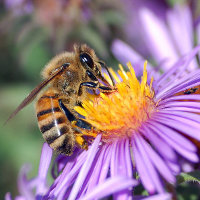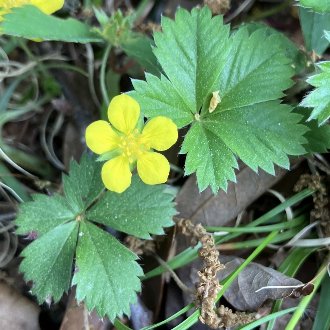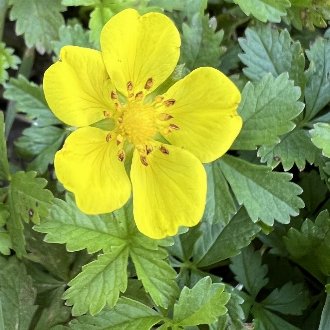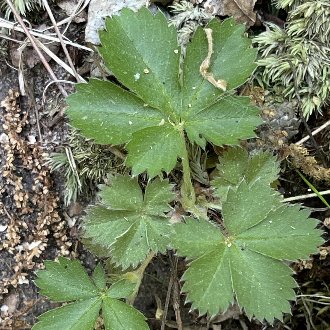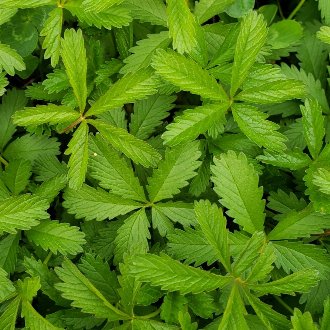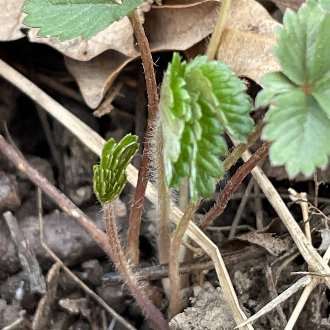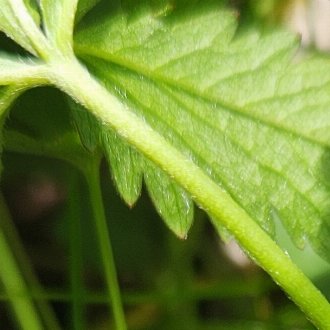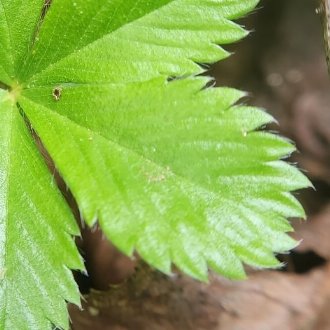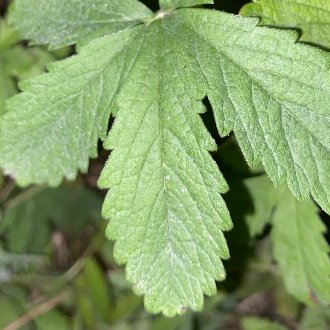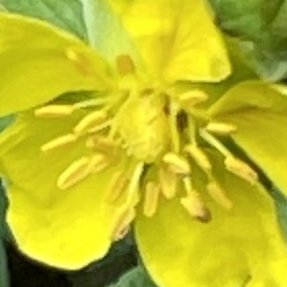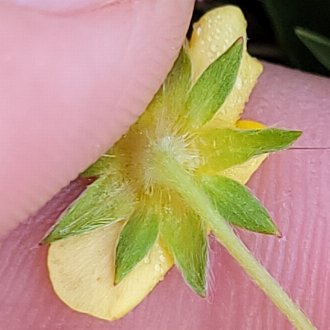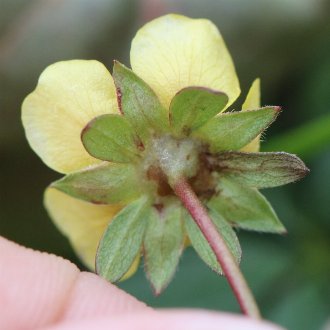Dwarf Cinquefoil vs European Cinquefoil
These two species, one native and one introduced, are visually-similar and easily confused; both can grow in lawns, but they have little overlap in preferred soil conditions. They can be distinguished by leaves and flowers as well as several other subtle differences. The native P. canadensis has a more extensive range, and prefers dry, acidic soils, whereas P. reptans has only been introduced at scattered sites, but it can occur farther west, and can be invasive where it occurs. It ranges into moister conditions and prefers near-neutral pH.
Dwarf Cinquefoil (Potentilla canadensis) | European Cinquefoil (Potentilla reptans) |
A native, creeping perennial of Eastern North America, occurring on dry to mesic, lightly-shaded sites with acidic soil. | A creeping perennial introduced at scattered sites across North America, invasive in places, preferring near-neutral pH. |
Flowers are much smaller, petals 4-6mm long, 3.5-6.5mm wide. Photo © Alicia Ballard, CC BY 4.0. | Flowers are much larger and showier, petals 7-9mm long, 6-9mm wide. Photo © Ian Wolfe, Public Domain. |
Leaflets have little space between them and are often overlapping over much of their length. Photo © Summit Metro Parks, CC BY 4.0. | Leaflets have more space between them and usually are only minimally overlapping. Photo © John Brown, Public Domain. |
Petioles (stem connecting each compound leaf to the main stem or base of the plant) average hairier, and hairs are more likely to spread outward from the stem. Photo © Tom Pollard, CC BY 4.0. | Petioles average less hairy, and hairs are pressed against the stem, often tightly so. Photo © , CC BY-SA 4.0. |
Terminal leaflet usually has 2-7 teeth per side, and teeth are limited to roughly the half of the leaflet closest to the tip, or only slightly more than half, with the base being devoid of teeth. Photo © Koby Yen, CC BY 4.0. | Terminal leaflet usually has 4-12 teeth per side, which usually proceed along about 3/4th the length of the leaflet, with only about 1/4th the leaflet closest to the base lacking teeth. Photo © Yann Kemper, Public Domain. |
Filaments (long, narrow part of stamens) are shorter (0.5-2mm), and anthers (pollen-bearing structures at the tips of the stamens) are much smaller (0.4-1mm). Stamens don't usually project very far onto the petals. Photo © Scott Morris, CC BY 4.0. | Filaments are longer (1-2.5mm) and anthers are longer (1.3-2mm); stamens usually project farther onto the petals. Photo © philippthompson, Public Domain. |
Epicalyx bracts (leaflike structures underneath each flower, lined up with the petals) are often slightly smaller than the sepals (similar structures but alternating with the petals.) Photo © jamie, CC BY 4.0. | Epicalyx bracts are often significantly larger than the sepals. Photo © Adrienne van den Beemt, CC BY 4.0. |
Additional Notes
Also compare both species to the native common cinquefoil (Potentilla simplex), which overlaps in habitat more with each of these two species than they do with each other. P. simplex has smaller flowers like P. canadensis, but longer, narrower leaflets like P. reptans, and it has a more upright growth habit than either species.References & External Resources
These short lists show only links helpful for ID. For a complete list of references and resources also covering other aspects of ecology, visit the links section of the full article on each plant, which is the first entry here.

